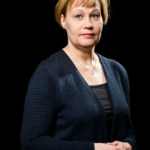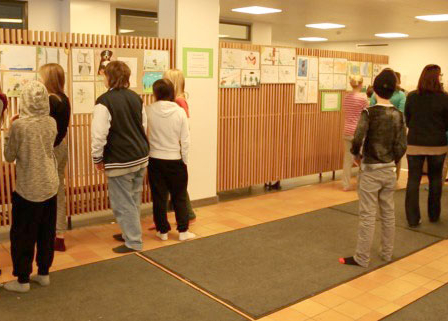The model is based on an information system into which professionals can enter the contact details of children or young people who may need support. This is preceded by a discussion of the issue with the young client, and a request for permission to divulge information. If necessary, the child’s guardian is also approached for such permission.
For example, the flagging process could make the young person aware of his or her eligibility for, or even the existence of, certain services. It could also play a crucial role in a situation where better support could be provided through co-operation between professionals. Being flagged is not a negative thing – quite the opposite. The beauty of the approach, and of the information system, is that two entries on the same young person will prompt professionals to discuss the issue and agree on suitable measures for resolving matters together with the family.
It will supplement, rather than replace, existing forms of support, with the particular aim of boosting co-operation between professionals. If a child or young person is in need of immediate support, a professional must provide this without delay.
In Mikkeli, a trial has been under way since the end of January 2014, and experiences have been positive.
”The trial in Espoo will serve as a pilot for the entire Helsinki area,” says Sampo Suihko, Head of Education and Cultural Services in the City of Espoo. According to Suihko, the model will be rolled out in stages. The first stage will involve the training of youth service professionals, school psychologists and curators, and the police. This training is beginning in May 2014.
”During recent research on and investigations of the causes of lack of well-being among the young, the need for closer co-operation between professionals has been raised in several contexts,” says Leading Specialist Kimmo Haahkola of Sitra. “The aim is to introduce new tried and tested approaches to issues such as the ongoing reform of the Youth Act. The practical trials implemented in Espoo and Mikkeli will help to bolster interaction and co-operation, in order to ensure that young persons’ interests are the priority in every case.”
The pilot flagging system in Espoo is being funded by the City of Espoo, the Finnish Innovation Fund Sitra and the Ministry of Education and Culture.
A similar approach (Verwijsindex, the Reference Index) has been in use across the the Netherlands since 2010. In the case of the Dutch system, it is interesting that most flagging occurs across municipal boundaries, due to the fact that young people and families move between local authority areas during their leisure time and when using services. Establishing a national operating model enables professionals to co-operate across these boundaries.
The Tajua mut! projects form part of Sitra’s Focus on Youth programme. These involve the implementation of projects with the aim of enhancing timely and rapid co-operation between different areas of the public sector, and boosting low-threshold services that are provided on young people’s terms. Young people in Mikkeli gave the programme its title, which reflects the desire of the young in general to be taken into account and understood.
Further information:
City of Espoo project website (in Finnish only)
Kimmo Haahkola, Leading Specialist, Sitra: kimmo.haahkola@sitra.fi +358 50 380 8603
Sampo Suihko, Head of Education and Cultural Services, City of Espoo: sampo.suihko@espoo.fi +358 50 551 8119
Riikka Puusniekka, Project Manager of Tajua mut! Project, City of Espoo: riikka.puusniekka@espoo.fi +358 43 825 6043
Parliament Audit Committee Recommendation (Audit Committee Report 1/2014 vp – in Finnish)
Reform of the Youth Act (in Finnish)




Recommended